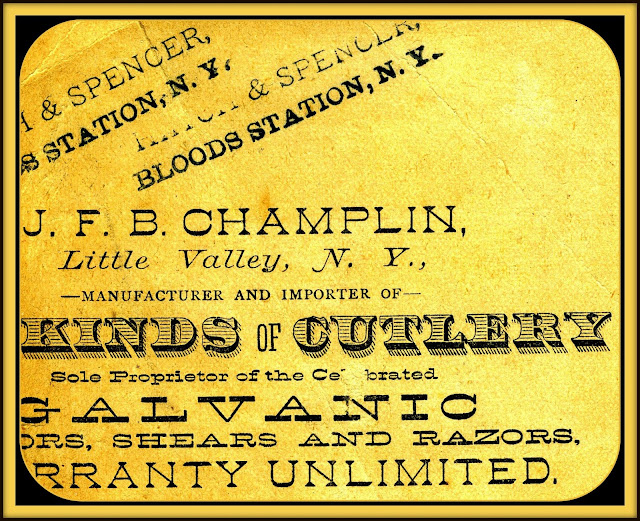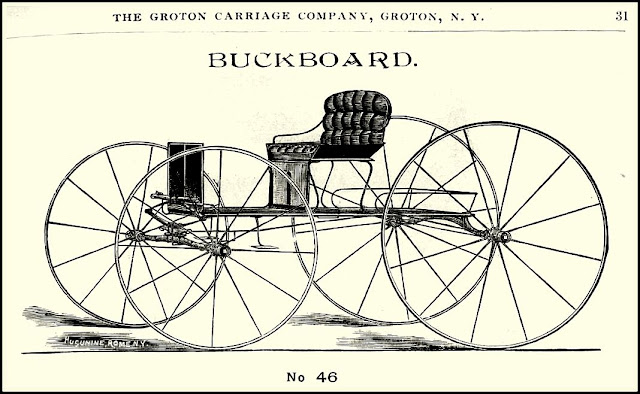Mary Had a Little Lamb
updated 25 July 2019
Not long ago, in the era of the one-room rural school house, it was not unusual for farm animals to be close neighbors. It was fortunate for the teacher that it was a lamb that followed Mary to school. There were other possibilities!
 |
| Mary Sawyer and her lamb enter her school. A century ago the lamb was white. Mary went to school in Sterling MA. |
Mary had a little lamb,
His fleece was white as snow,
And everywhere that Mary went,
The lamb was sure to go.
He followed her to school one day,
Which was against the rule,
It made the children laugh and play
To see a lamb at school.
And so the teacher turned it out,
But still it lingered near,
And waited patiently about,
Till Mary did appear.
"Why does the lamb love Mary so?"
The eager children cry.
"Why, Mary loves the lamb, you know."
The teacher did reply.
The melody has been with us at least since 1816. It might be older. Here's how the Beatles interpreted it as per YouTube:
Provided to YouTube by Universal Music Group
Mary Had A Little Lamb (2018 Remaster)
· Paul McCartney & Wings Red Rose Speedway ℗ A Capitol Records Release;
℗ 2018 MPL Communications, Inc, under exclusive license to UMG Recordings, Inc.
Released on: 2018-12-07 Producer: Paul McCartney
Studio Personnel, Mastering Engineer: Alex Wharton
Composer: Paul McCartney Composer: Linda McCartney
· Paul McCartney & Wings Red Rose Speedway ℗ A Capitol Records Release;
℗ 2018 MPL Communications, Inc, under exclusive license to UMG Recordings, Inc.
Released on: 2018-12-07 Producer: Paul McCartney
Studio Personnel, Mastering Engineer: Alex Wharton
Composer: Paul McCartney Composer: Linda McCartney
Of course for such a popular song, there are many variations:
Artist: Stevie Ray Vaughan & Double Trouble
SME (on behalf of Columbia); CMRRA, SOLAR Music Rights Management,
BMG
Rights Management, PEDL, Abramus Digital, UMPI, and 9 Music Rights
Societies
Classical alternatives include these two:
David Mann performing a traditional children's song,
"Mary Had A Little Lamb"
"Mary Had A Little Lamb"
on the piano with different classical variations.
Live from Church
of the Pacific in Princeville, Hawaii - March 2013.
Videographer: Orion
Clark and clarkelements.com. Edited by, Claire Wadsworth
Piano medley Manney put together for his HS talent show-
Mary Had a
Little Lamb, Revolutionary Etude, All That Jazz, Phantom of the Opera,
A
Thousand Miles, Liebestraume, Linus and Lucy, If I Aint Got You,
Ice
Ice Baby (/Under Pressure), Beethoven's 5th Symphony, Firebird
Unfortunately, 10 years after posting, there's not much info on "Manney."
What's the story behind this popular song? Here's a summary:
An American nursery rhyme, “Mary Had a Little Lamb” is one of the few
with a fairly clear, and innocuous, origin. The poem is attributed to
Sarah Josepha Hale, and sprang from an incident in which a young girl
named Mary Sawyer took her pet lamb to school. Mary later recalled being
shown the poem by John Roulstone, a young man preparing for seminary
who was visiting the school the morning of the lamb’s appearance. Though
he was amused by the lamb’s presence and returned to show Mary the poem
inspired by it, it’s believed that Hale wrote most or all of the poem.
From https://www.huffingtonpost.
The back of this trade card is a bit of a mystery:
Little Valley, NY is a real place. The merchant stamped on the card was "Hatch and Spencer." "Bloods Station NY," however, while it cannot be found on a contemporary NY state map, is described as follows in the reference below discovered by Michael Losicco:
| Title | Landmarks of Steuben County, New York | ||
| Editors | Harlo Hakes, Lewis Cass Aldrich | ||
| Publisher | D. Mason, 1896 |
ATLANTA Thirty five years ago a writer of local history said Blood's a hamlet is a station on the railroad one mile from North Cohocton. It is named from Calvin Blood.
This is rendered an important station on the railroad from its connection with the Canandaigua Lake route. A daily line of stages runs to Naples at the head of the lake and a steamer plies daily between the latter place and Canandaigua.
A still later writer describes Blood's Station as a thriving little hamlet on the railway and point of departure for the stage route to Naples and Canandaigua and further says a post oftice was established at Blood's April 21 1871 through the instrumentality of Asa Adams who was the first postmaster. From this we may correctly infer that the residents of this locality were compelled to repair to the north hamlet for their mail previous to 1871 when the post office was located at Blood's.
However, long before this the hamlet was one of the recognized centers of the town and one of importance in various directions. But from these elements there has grown a thriving village and in the course of time in fact at a quite recent date the old name of Blood's or Blood's Station was discontinued and in its stead the more euphonious designation of Atlanta was adopted.
The railroad and the diverging stage route to Naples gave Atlanta an importance forty years ago and from that time to the present there has been no retrograde movement...
Today [1896] the hamlet stands prominent among the several villages of the town. However a disaster came to local interests during the month of September 1895 and by it several large buildings were burned to the ground. The principal sufferers from this fire were John Dunn, H V Hatch, LD Hodgman, LR Partridge, Henry Clark and TJ Cornish.
The business interests of Atlanta at the present time are represented substantially as follows: DC Borden, TJ Cornish and JC Whitmore, grocers, J Radish drugs, WE Waite hardware, Wheaton & Wells meat market, G Kesler and Frank Davy blacksmiths, John Spencer and Byron Hayes feed mills, F Parks clothing, John Langdon and John Dunn hotel keepers.
The Free Methodist church of the town is located in this village and in the matter of schools there is an association with North Cohocton in a union free school and district. The school house is located between the villages convenient to both.
Here's a description of Little Valley (click to enlarge):
 |
| Gazetteer of the State of New York, Embracing a Comprehensive View of the Geography, Geology, and General History of the State, and a Complete History and Description of Every County, City, Town, Village and Locality. With Full Tables of Statistics – |
The Champlin business, properly J.B.F, became Cattaraugus Cutlery, eventually ending up on 6th Street in Little Valley, where it stayed in business until 1963. The pictures below show the 6th Avenue site when it was prosperous and then after two fires, one in August 2015 and again in August of 2016.

from "Historic Path of Cattaraugus County" [ http://historicpath.com/gallery/cattaraugus-cutlery-and-or-jbf-champlin-little-valley-ny-522 ]

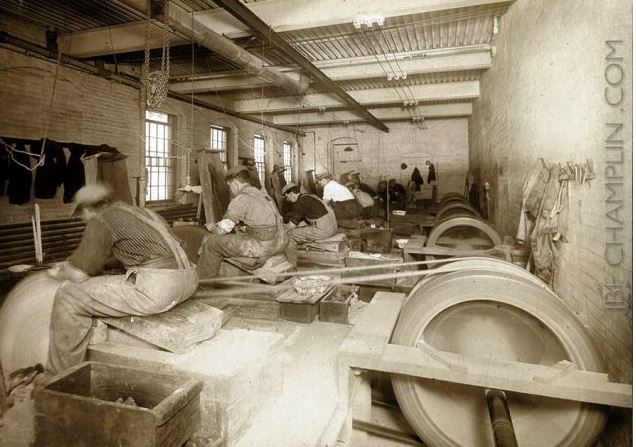
Interior of Cattaraugus Cutlery; image from [ http://historicpath.com/ ]

smouldering remains of Cattaraugus Cutlery after August 2015 fire
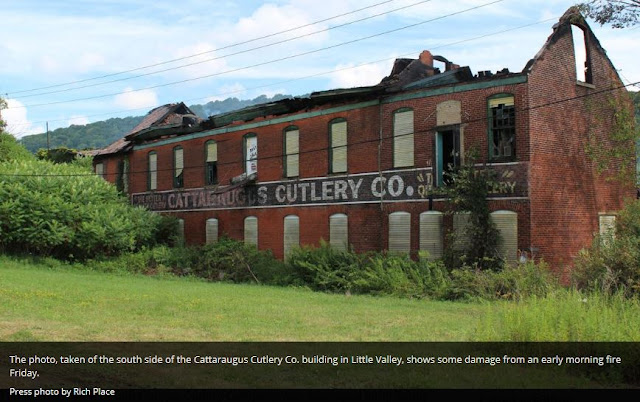
7 August 2015; Salamanca Press photo by Rich Place [ http://www.salamancapress.com/news/article_afbca834-3d15-11e5-a39e-bb0b163dd1f0.html ] retrieved 11 December 2018

Main building being torn down after fire




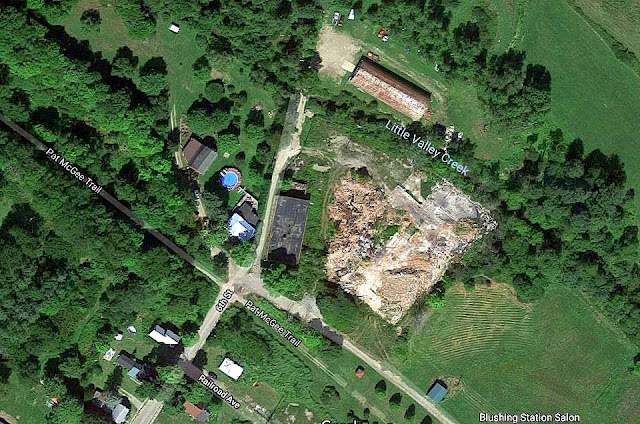
Pat McGee Trail follows old railroad line in this 2018 Google Earth image of 2 remaining Cattaraugus Cutlery buildings and pile of rubble where main complex used to be. [ Google Earth [ https://www.google.com/maps/@42.25238,-78.797231,239m/data=!3m1!1e3?hl=en ] accessed 11 December 2018

For color samples of Cattaraugus Cutlery products online, see [ https://www.allaboutpocketknives.com/knife_forum/viewtopic.php?t=19071 ] from which this image was obtained on 12 December 2018.


For additional information, Michael Losicco & Derek Smith have compiled an excellent site.
Finding your way around Appendix I
- Anonymous Cards
- Appendix I Introduction & Contents
- Bennett Tea House Collection
- Comprehensive Index: Earl J. Arnold Collection
- E.F. Kunkel Cures Your Ills!
- Eureka!
- Fuller & Warren Co.: Connection of the Century
- Mary Had a Little Lamb
- A Moment for Reading & Reflection (courtesy Dr. Jayne)
- Pierce's Memorandum & Account Book
- Pierce's Neighborhood Gossip & Dream Book
- At Random: A Variety of Trade Cards
- Stiffen up! New Process Starch
- Universal Fashion Company
- Whatever happened to Lion Coffee?

